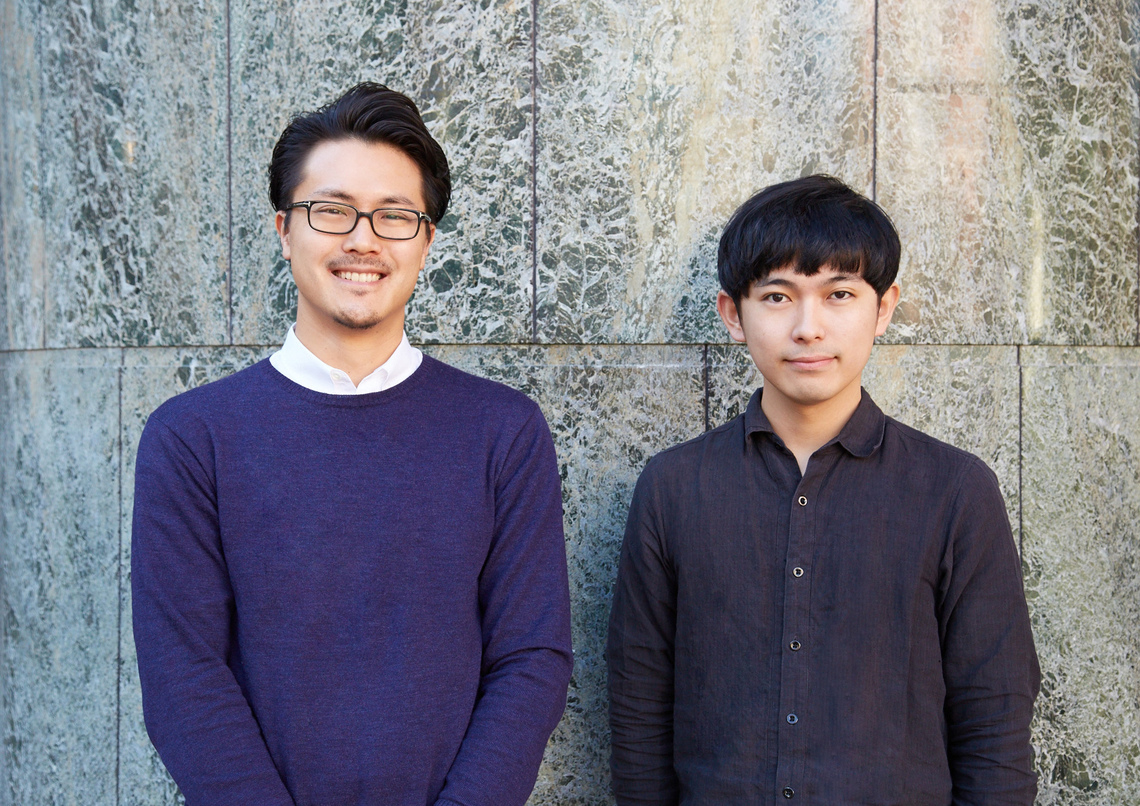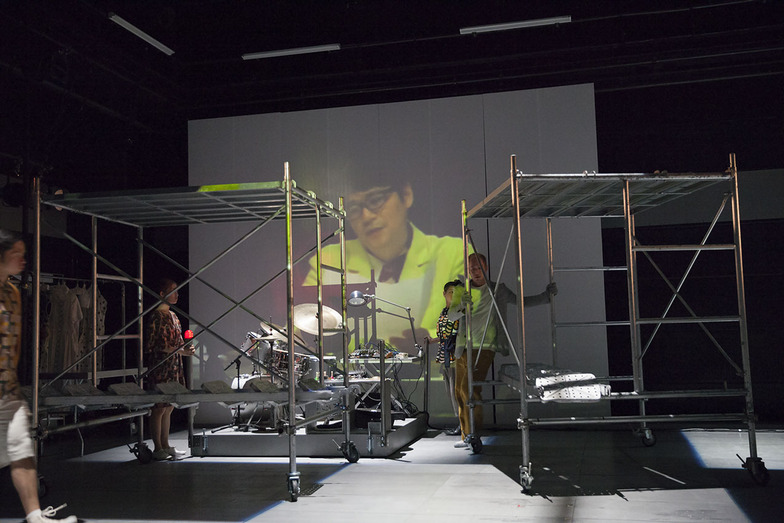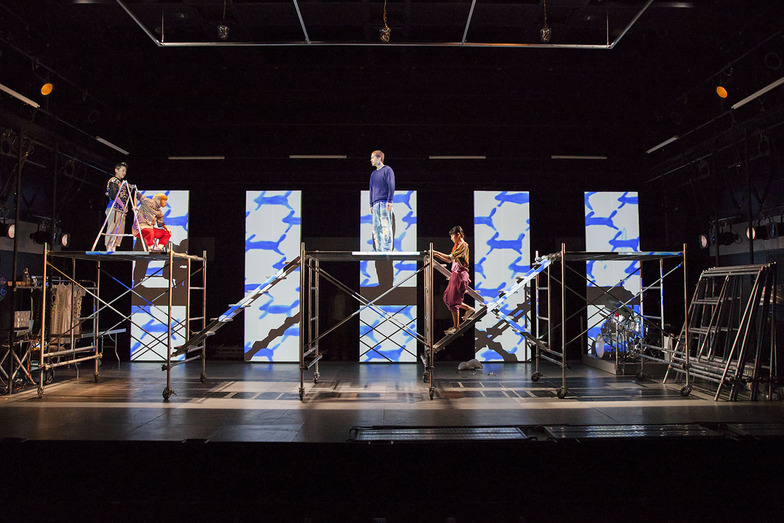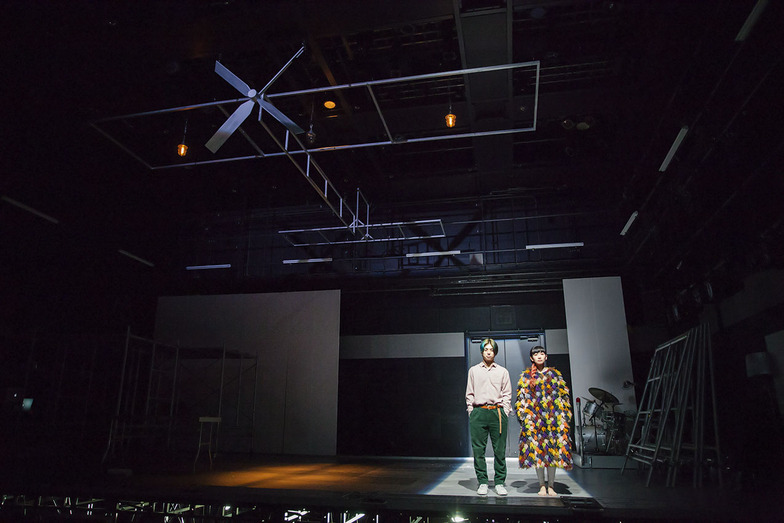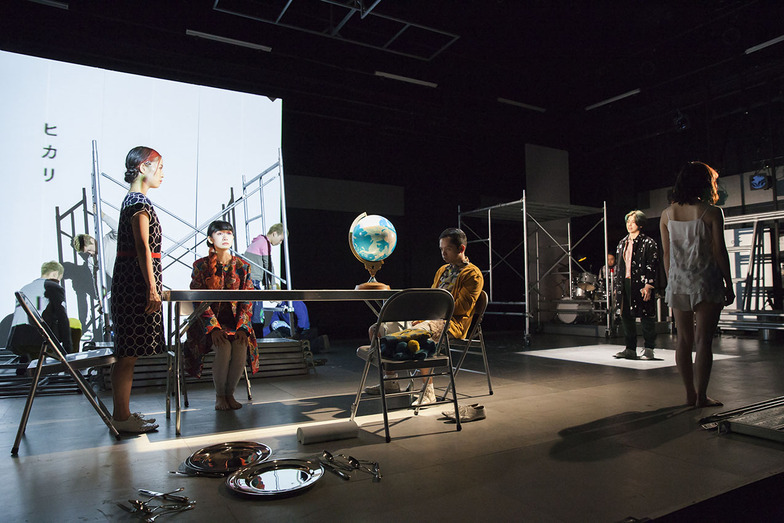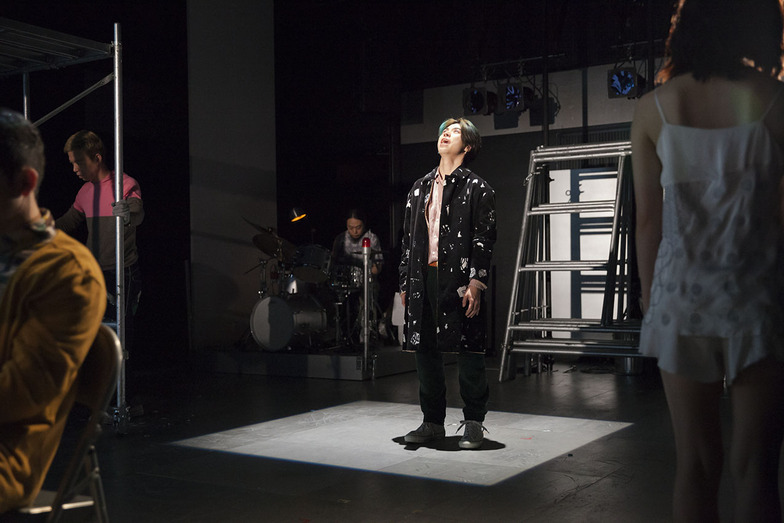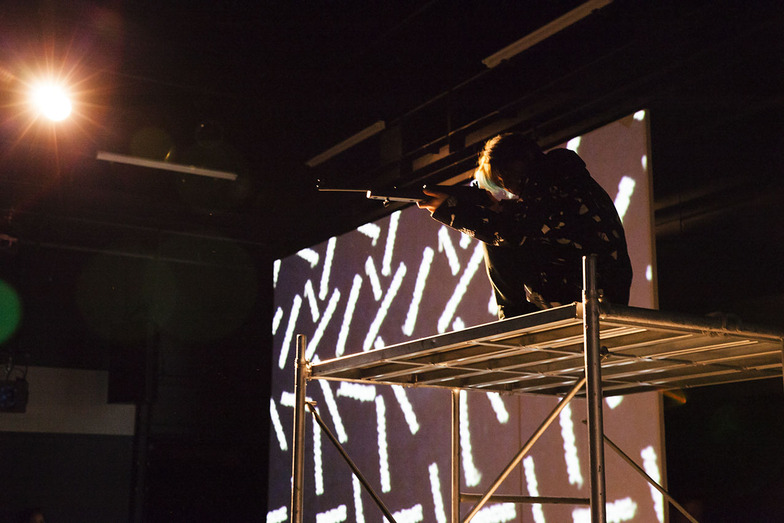Scattering something in-between, something that can't be described by theater alone, throughout the space
Takuya Fujita (hereafter Taku): Audiences' time is limited, right? The challenge is finding points of connection to capture their interest.
Takahiro Fujita (hereafter Takahiro): With just the internet, anyone can create any kind of visual expression. But within that, how can an analog genre like theater survive? How do we balance what can be done at home with what requires going out and experiencing? We still want people to leave their homes. In the case of " Throw Away Your Books, Let's Go to the Streets," we want them to pay 4,800 yen and say, "I'm glad I saw it."
Can theater alone truly keep an audience seated for two hours? I want to scatter various elements throughout the space – moments that aren't purely theatrical, or that defy description as just theater, something in-between – and see where we can find satisfaction.
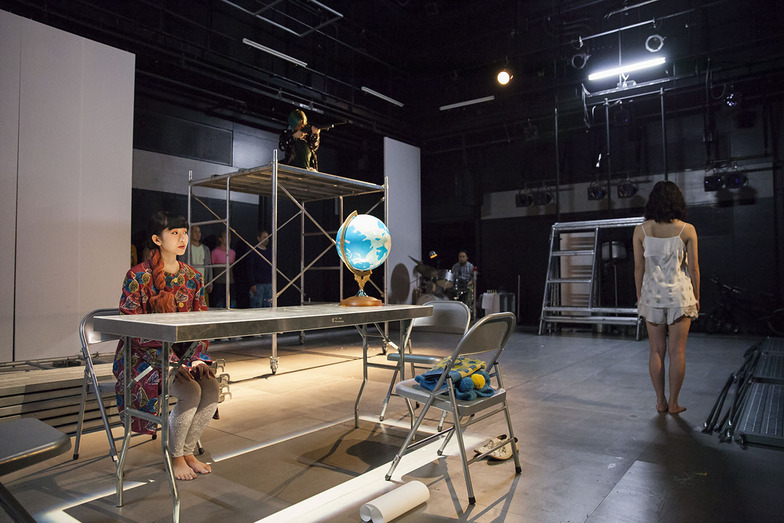
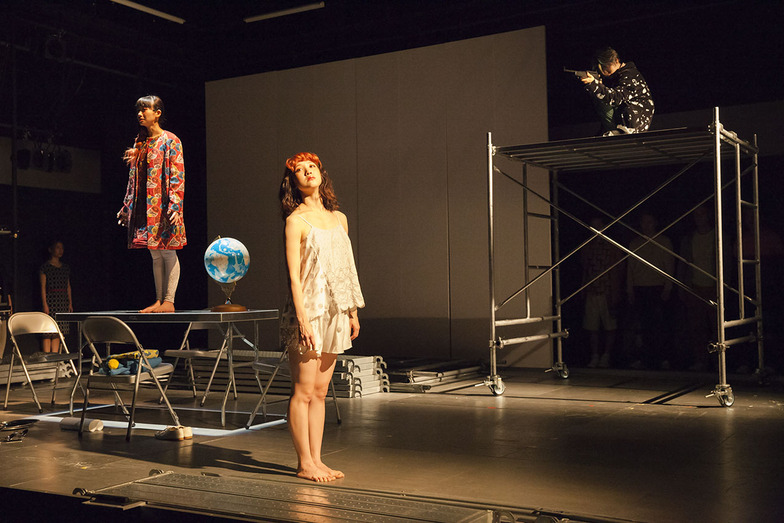
All photos above are from the production "Throw Away Your Books, Let's Go to the Streets" performed at Tokyo Metropolitan Theatre (December 5-27, 2015).
Photography: Sayuki Inoue
Taku: Exactly. I really felt Mr. Fujita's direction was built in layers. He creates so many hooks, you see.
Takashi: Right now, I'm in a phase where I'm trying that kind of thing, and because I'm facing these issues head-on, it's tough on the whole staff. Various collaborations are happening simultaneously within a single work. We're collaborating with music and costumes on all fronts, and for reinforcing the language, we're also working with people like Naoki Matayoshi and Hiroshi Homura.
On the other hand, I sometimes think that someday, instead of this approach, it might be good to return to just theater. To sharpen things up again and see how many people follow. I turned 30 this year, and my thirties will probably be about using my time that way. But even when sharpening, I think the sharpness achieved after first spreading things out and getting covered in noise is more credible.
Taku: I really relate to that. The process of thinking about advertising communication is exactly like that. In the sense of expanding ideas and then converging them sharply in the end.
Obsessed with creating an "authentic space" for the audience
Taka: When I was around 20, I worked as an assistant director. Once, an actor who had exited behind a panel started reading Jump the moment they disappeared behind it (laughs). The show runs about an hour and a half or two hours, right? I was shocked they couldn't even endure that time without reading Jump. I thought maybe making all the wing panels transparent would be more interesting (laughs). But the audience is truly facing the stage for those two hours, so shouldn't they be able to endure that much? I aim to create a space without lies for the audience who comes.
Taku: So you believe actors absolutely must maintain that intensity throughout the entire performance?
Takashi: Yes, that's why we don't let them leave the stage (laughs). Generally, everyone (the actors) stays on stage. In theater, actors might drink water offstage where the audience can't see, but we make them do even that drinking in front of the audience.
Taku: It's like the scene changes in the Drifters (laughs). It connects to that feeling of seeing something you can only see here. When I plan events, I also strive to push the rarity of the experience to its limits. My goal is to take that experience to a point where you can't even describe it with words. In this production of "Throw Away Your Books, Let's Go to the Streets," when performers ran through the aisles behind the seats, the audience in front would turn around, making the entire space feel like a tense stage.
Taka: There's a part where you bet on that one-time-only quality, and then how much of that you ultimately package into the work. Showing something with high rarity value is something you can't compromise on—especially in times like these, I feel that strongly.
The way a performance is perceived changes completely depending on the location. That's why when I go to regional performances, I make a point of learning from the locals about what kind of food they eat there and what kind of history the place has. Theater is truly a comprehensive art form – you can incorporate music, obsess over lighting and visuals, and create the entire story from scratch.
Always aiming for the next "different chemical reaction"
Tak: How do you direct collaborations with various partners?
Taka: Whether it's costumes or music, I absolutely refuse to impose only my own image or wishes on the people I collaborate with. I think that severely limits possibilities. For example, with costumes, I've never said, "I want this kind of outfit for this scene." Instead, it's more like, "This scene is roughly this kind of scene, but any outfit that suits this actor is fine." When too many elements coexist, it can become high-risk and turn into scattered noise. But I deliberately keep making these roundabout adjustments.
Taku: That's about respecting the creators making it, right? Looking at it another way, maybe it has that "you can see the farmer's face" kind of effect (laughs).
Taka: Exactly. Starting as vaguely as possible probably sparks different chemical reactions.
Taku: That takes courage.
Taka: I think there are several potentials in creating a work. I get orders like, "We want you to do this Terayama Shuji piece this December." So what should I do? At first, you're lost, right? Do I want to fully utilize Fujita's collaborative skills? Do I want to go head-to-head with the actors in directing? Do I want to pay homage to Terayama Shuji? I think there are various approaches. If you narrow it down too much, you can't draw out the potential, so balancing the combinations is tricky.
Taku: So you're broadening the scope of direction to maximize potential.
Taka: The person receiving the order feels more secure when given specific instructions, but ease of execution is actually dangerous. It's hard to find the right words to push those subtle boundaries.
Taku: So you skillfully create situations that force the other person to think deeply.
Taka: Maybe it comes off as a bit sadistic (laughs). But I've had my share of failures and gotten yelled at plenty of times (laughs).
Taku: Hearing you talk today, I thought it would be fascinating if you explored video works or other creative fields. I feel content still has immense potential for expansion through various combinations. With someone like you, even collaborations with the advertising field could yield something truly interesting. Today was incredibly educational.
<End>
<Performance Information>
"Goodbye at Night" "Before Dawn Breaks, Morning" "K and the Edge of Midnight"
Written and Directed by Takahiro Fujita
2016.Feb. 11-28/Saitama Arts Theater Small Hall
http://www.saf.or.jp/arthall/stages/detail/3387
Challenge Fukushima Performing Arts Project! "Timeline"
2016.3.26 Sat/Fukushima Prefectural Cultural Center (Fukushima City, Fukushima Prefecture)
Written and Directed by Takahiro Fujita / Music by Yoshihide Otomo / Photography by Naoki Ishikawa / Choreography by Kona Sakai
Performed by: Junior High and High School Students from Fukushima Prefecture Organized by: Fukushima Prefecture
http://www.fukushima-performingarts.jp
LUMINE0 Opening Event: Simultaneous Performance of Three Repertoire Works
2016.4.28 Thu - 5.8 Sun / LUMINE0
"Different Shapes" 2016.4.28 Thu – 4.30 Sat
"Akkono Hanashi" May 2, 2016 (Mon) – May 4, 2016 (Wed)
"A line connecting dots. A three-dimensional form. Within it, contained, numerous distinct worlds. And about light." 2016.5.6 Fri – 5.8 Sun
http://mum-gypsy.com




